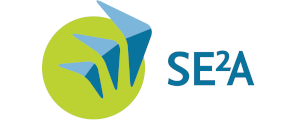
This project aims at investigating active and partially passive wing control functions combining active flutter control with “rigid-body“ (manual flight modes and/or autopilot) and flexible laws (manoeuvre and gust load alleviation functions). The load alleviation functions shall significantly reducing gust and manoeuvre loads down to a level equivalent to steady 1.5g to 2.0g flight and the flutter control law shall permit to fly right at the limit or even slightly beyond the open-loop flutter speed. Sensor networks integrated into the wings and fuselage will facilitate accurate evaluation of the aircraft current and future state. If this information is integrated into the flight controls, uncertainties can be reduced and flight controller performance can be significantly improved. By doing so, significant mass saving can be obtained, assuming no change in planform of the wing. Part of these savings can also be traded against an increase in aspect ratio of the wing, i.e. against an improvement in aerodynamic efficiency of the aircraft. This project builds upon the results of the ICA B2.3 project of the first phase. Compared to the B2.3 project, the new elements are:
The investigation of manoeuvre load alleviation functions.
The investigation of flutter control functions, including comparison between modal approaches (e.g. eigenstructure assignment), robust/modern control approaches (Hinfinity/H2), and adaptive approaches (e.g. INDI).
The investigation of the interplay between active wing control functions (“rigid-body“ laws, manoeuvre load alleviation functions, gust load alleviation functions, and flutter control functions) and how to prevent these functions from working against each other.
The investigation of sensor network (i.e. distributed across the wing to better estimate the current state of the main aircraft flexible states/modes and use this information in the flight controls).
Support of the ICA A work by providing various flight mechanical models for improved representativeness of the ICA A investigations.

Dr.-Ing. Meiko Steen
Institute of Flight Guidance, TU Braunschweig
m.steen(at)tu-braunschweig.de
Dr.-Ing. Nicolas Fezans
Institute of Flight Systems, German Aerospace Center (DLR)
nicolas.fezans(at)dlr.de
Institute of Flight Guidance
Technische Universität Braunschweig
Hermann-Blenk-Str. 27
38108 Braunschweig
Institute of Flight Systems
German Aerospace Center (DLR)
Lilienthalplatz 7
38108 Braunschweig